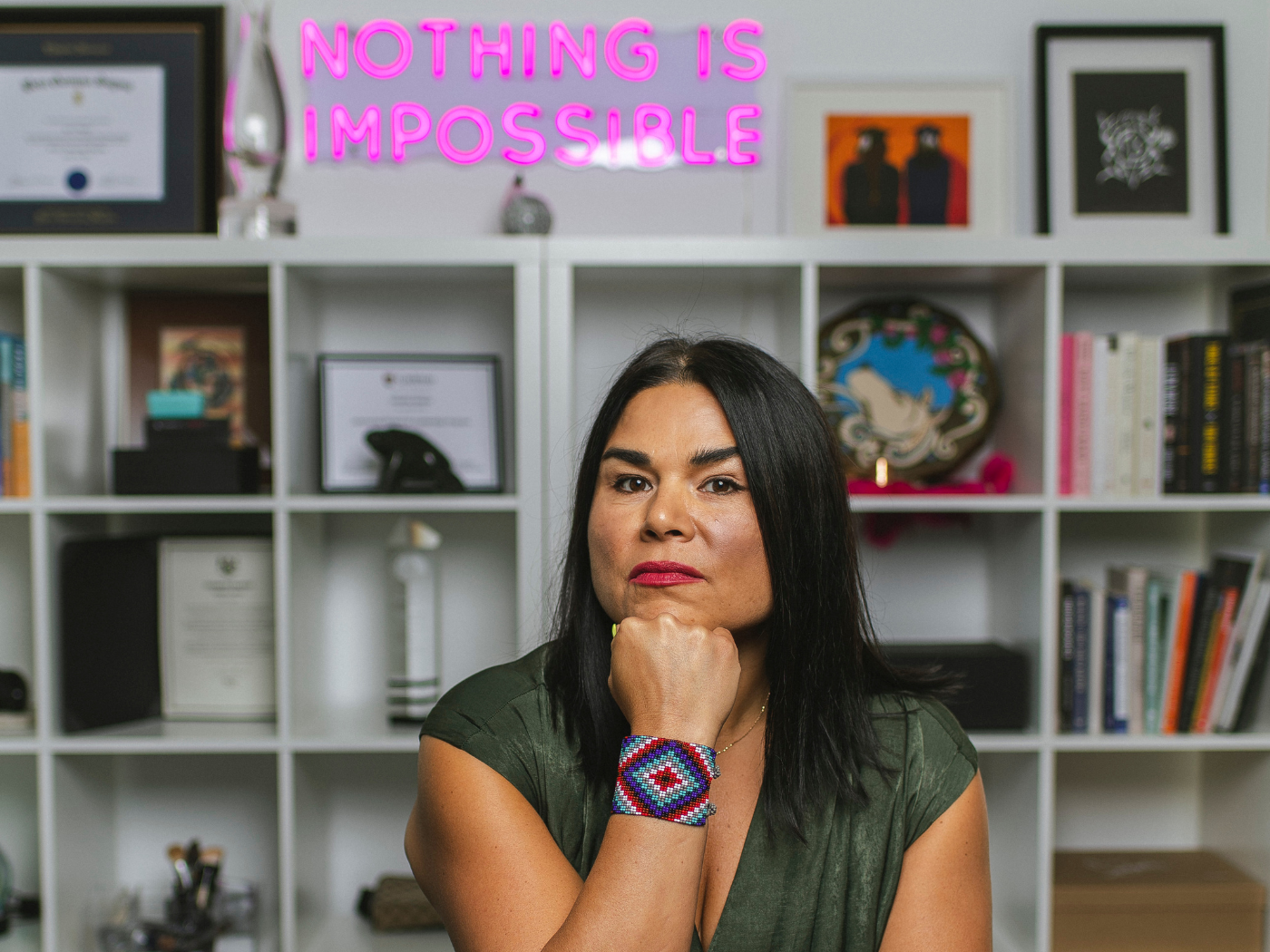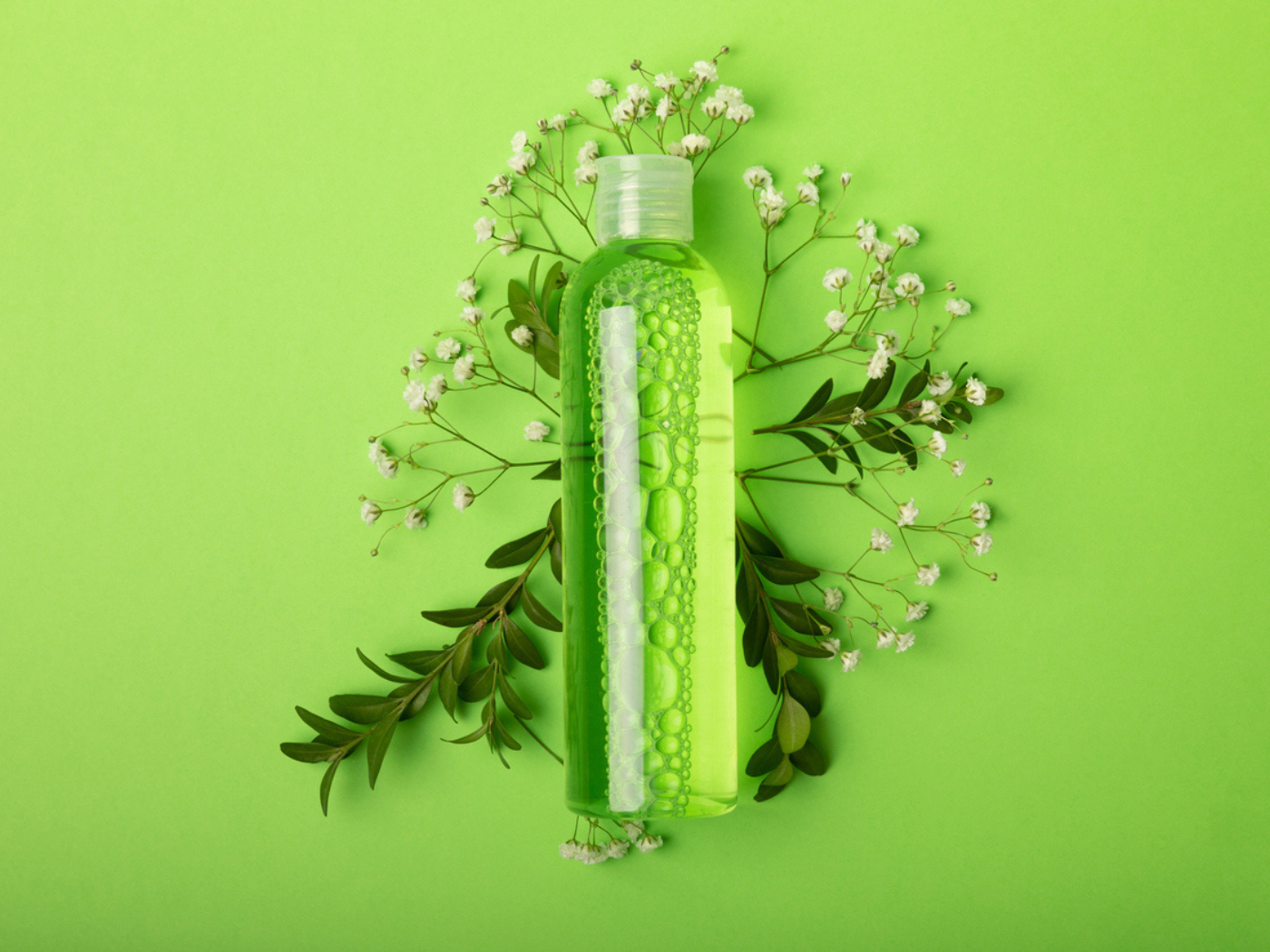Inspiration sometimes strikes at unlikely hours. For Cheekbone Beauty founder Jen Harper, it came in the middle of the night—wrapped in a dreamlike bubble of REM waves. “I dreamt of native little girls dancing, laughing, and just displaying such genuine joy all while covered in lip gloss,” says the Anishinaabe Canadian.
Inspired by this delightful nocturnal reverie, Harper hopped out of bed to write down her idea, and then spent months researching manufacturing before launching her brand in 2016.
A few months into sobriety after an eight-year battle with alcoholism and motivated by the lingering negative impact Canada’s residential school system had on her grandmother and the rest of her family, she set out to create a brand that not only filled the void of Indigenous representation in the beauty industry but also to give back to the community.
“I never wanted another Indigenous youth to feel the way I did growing up, not seeing people like me in the media. I also wanted to weave concepts of Indigenous wisdom with Western science to create high-quality, sustainable products that help both people and the planet. In Indigenous culture success is not defined by one person’s accomplishments but by what a person does for their community.”
CEW sat down with Harper to discuss how Cheekbone beauty empowers Indigenous individuals through multiple community-based initiatives while leading the way in environmental innovation.

CEW: Can you share the story behind Cheekbone Beauty and how your Indigenous heritage has influenced the brand’s mission and values?
Jen Harper: One of the main things that inspired me to create Cheekbone Beauty was the lack of representation in the beauty space. I knew the world didn’t need any more beauty brands. I really wanted to create a brand that highlighted Indigenous faces and gave back to community. In Indigenous culture success is not defined by one person’s accomplishments but by what a person does for their community. That is why we went through the rigorous process of becoming a B-Corp. Certified company so we could give back to many organizations that support Indigenous youth and community.
CEW: Indigenous Peoples Day is a time to celebrate and honor the contributions of Indigenous communities. How does Cheekbone Beauty actively support and empower Indigenous individuals and communities through its business practices and products?
JH: As an Indigenous-owned and founded company, we actively support and empower individuals and communities through our business practices and products every day. We have our own Cheekbone Beauty Scholarship Fund that awards Indigenous students participating in post-secondary education with $2,500 CAD towards their studies if their application is chosen. In addition to our own fund, we also support several organizations that support Indigenous youth and community.
CEW: Sustainability and environmental consciousness are increasingly important in the beauty industry. How does Cheekbone Beauty incorporate Indigenous wisdom and eco-friendly practices into its product development and production processes?
JH: As I often say, Indigenous people are the OG’s of sustainability. While sustainability, protecting the environment, and social responsibility are big drivers in business, these are things we would have done regardless. Our products are developed with sustainably sourced raw materials, reinforcing our Biinad Beauty Standards, which makes them safe for both people and planet. We take things further by using the teaching called Two-Eyed Seeing from Mi’kmaw Elder Albert Marshall. From the harvesting of raw ingredients to the end of the life of the product and packaging, we don’t want that to end up in the landfill or negatively impact our ecosystems. It all goes back to the Seven Grandfather Teachings of my Ojibwe culture.
The Seven Grandfather Teachings of the Ojibwe Culture*
*Adapted from Uniting Three Fires Against Violence
- Humility (Dbaadendiziwin):
- Represented by the wolf.
- Emphasizes living for the community and avoiding arrogance.
- Acknowledge your sacred place in creation and live selflessly.
- Find balance within yourself and respect all living things.
- Bravery (Aakwa’ode’ewin):
- Symbolized by the bear.
- Encourages facing fears and challenges with courage.
- Promotes a balanced life with rest, survival, and play.
- Stand up for what is right and make positive choices.
- Honesty (Gwekwaadziwin):
- Represented by the raven or sabe.
- Emphasizes being true to oneself and using one’s gifts.
- Walk through life with integrity and do not deceive yourself or others.
- Accept and use your unique gifts.
- Wisdom (Nbwaakaawin):
- Symbolized by the beaver.
- Stresses using natural gifts wisely and sustainably.
- Cherish knowledge, respect differences, and observe life around you.
- Learn and live by your wisdom.
- Truth (Debwewin):
- Represented by the turtle.
- Signifies faith, trust, and honor in teachings.
- Live with sincerity, understanding, and truthfulness.
- Be true to yourself and others, valuing the journey and the destination.
- Respect (Mnaadendimowin):
- Symbolized by the buffalo.
- Involves giving and sharing to sustain balance.
- Honor all creation, treat others well, and avoid waste.
- Live mindfully and do not harm yourself or others.
- Love (Zaagidwin):
- Represented by the eagle.
- Associated with strength, insight, and closeness to the creator.
- Love yourself truly to find peace within.
- Recognize love as the core of all teachings and maintain a peaceful, balanced life.




